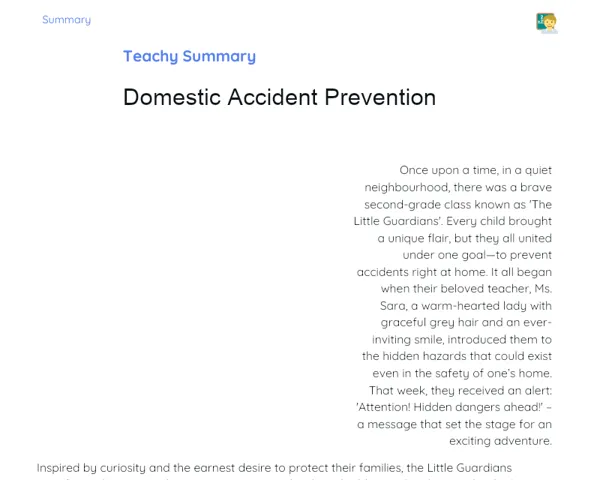Socioemotional Summary Conclusion
Goals
1. Understand how the Earth's movement influences the length of shadows during the day.
2. Identify and explore the emotions linked to scientific exploration and collaborative learning.
3. Enhance observation and descriptive skills by tracking changes in shadows.
Contextualization
🌞 Have you ever noticed how your shadow varies in size from morning to evening? In the morning, it's long and stretches behind you, but by noon, it's barely there! These variations aren't just random; they're a result of the Earth's rotation on its axis. Imagine being able to grasp this incredible science and also connect it to our emotions throughout the day! Ready to explore together? 🕵️♂️🔍
Exercising Your Knowledge
The Earth's Movement
The Earth spins on its axis, which we call rotation. This movement leads to day and night. It takes about 24 hours for the Earth to make one full spin. This constant spin creates the illusion of the sun 'moving' across the sky, thereby changing the position of shadows throughout the day.
-
The Earth's rotation is a continuous process that unfolds over 24 hours.
-
This movement brings about the cycle of day and night.
-
The rotation of the Earth influences the sun's position in the sky, which in turn affects shadows.
The Sun's Position
As the Earth rotates, the sun's position in the sky shifts throughout the day. The sun rises in the east during the morning, reaches its peak at noon, and sets in the west in the evening. These changes in the sun's placement result in variations in the size and direction of shadows.
-
In the morning, the sun rises in the east, casting long shadows.
-
At noon, the sun is at its zenith, resulting in the shortest shadows.
-
In the evening, as the sun sets in the west, shadows lengthen once again.
Shadow Formation
Shadows appear when an object blocks sunlight. The position and length of these shadows shift throughout the day in tandem with the sun's movement. For instance, a tree casts a long shadow in the morning and afternoon, but it's much shorter at noon.
-
Shadows occur when sunlight is obstructed by an object.
-
The direction and length of shadows change as the sun shifts position.
-
Monitoring shadows can give us valuable insights into the Earth's movement.
Key Terms
-
Earth's Movement: The rotation of the Earth on its axis, resulting in day and night.
-
Sun's Position: The perceived path of the sun in the sky due to the Earth's rotation.
-
Shadows: Dark areas that form when objects obstruct sunlight.
For Reflection
-
How do you feel when you notice your shadow changing size throughout the day? Do you feel curious, delighted, or something else? Why?
-
Think about a time during the day when you feel most invigorated (morning, afternoon, or evening). How does this connect to the sun's journey and the shadows you observe?
-
In a group setting, how can our observations regarding shadows and the sun help us better understand each other's emotions? Share an instance.
Important Conclusions
-
The Earth's rotation on its axis leads to the cycle of day and night.
-
The sun's position in the sky changes throughout the day, affecting the length and orientation of shadows.
-
Shadows are created when an object blocks sunlight, and observing these changes helps us comprehend the Earth's rotation.
-
The fluctuations in shadows during the day reflect our own emotional changes, such as peaks of energy and fatigue.
-
Engaging with nature and observing natural phenomena bolsters our skills in observation, reflection, and emotional regulation.
Impacts on Society
Observations about shadows and the sun's position directly influence our daily lives. For instance, understanding the movement of shadows can help us better schedule our outdoor activities and determine the best times to study or play. This understanding of natural phenomena deepens our connection to the environment and heightens our curiosity, inspiring us to examine the world around us. 👀🕵️♂️
👨👩👧👦 The emotional aspect of these observations is also crucial. Recognizing how the sun's journey affects our feelings and energy levels throughout the day enables us to manage our emotions more effectively. This awareness empowers us to make thoughtful choices that impact our time management and interactions with others, enhancing our emotional intelligence in diverse situations. 🌞🌚
Dealing with Emotions
🏠 To manage your emotions while exploring this lesson and its implications, here’s an exercise grounded in the RULER method: As you observe shadows throughout the day, take a moment to reflect on your feelings. Ask yourself: 'Am I feeling energized, curious, tired, or thrilled?'. Then, delve into the reasoning behind those feelings. Is it the changing sun, the temperature, or the excitement of the activity? Accurately label your emotions and express them constructively, perhaps by sharing your experiences with a friend or family member. Finally, seek ways to regulate these feelings—maybe go for a stroll to boost your energy or take a break if you're feeling worn out. ⭐️
Study Tips
-
Observe and note how shadows transform throughout the day in various settings, like at home or school. Jot down the timing of your observations to draw comparisons later.
-
Keep a small journal to track your emotions throughout the day, associating them with the changes in shadows and the sun's position. This practice will help you understand the fluctuations in your feelings.
-
Share your findings about the sun and shadows with family and friends. Teaching what you've learned is a fantastic way to reinforce your knowledge and enhance your communication skills. 🌞📓



